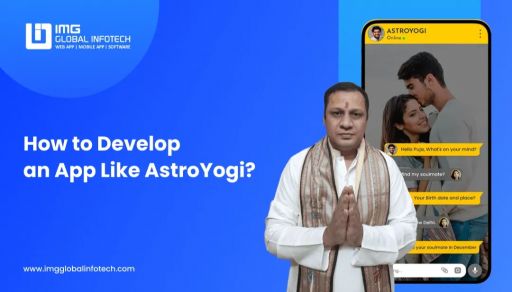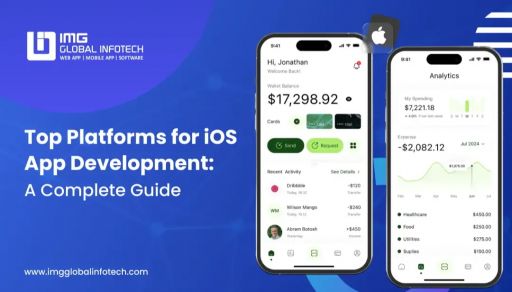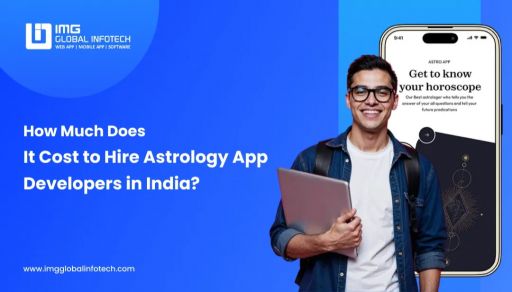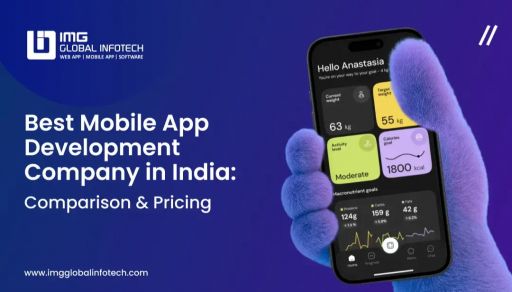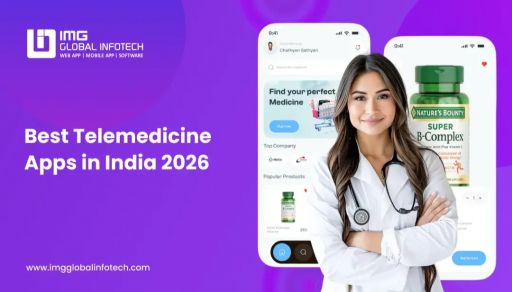How To Build A Food Delivery App Like Hungry Panda?
Neeraj Rajput
Aug 10, 2025
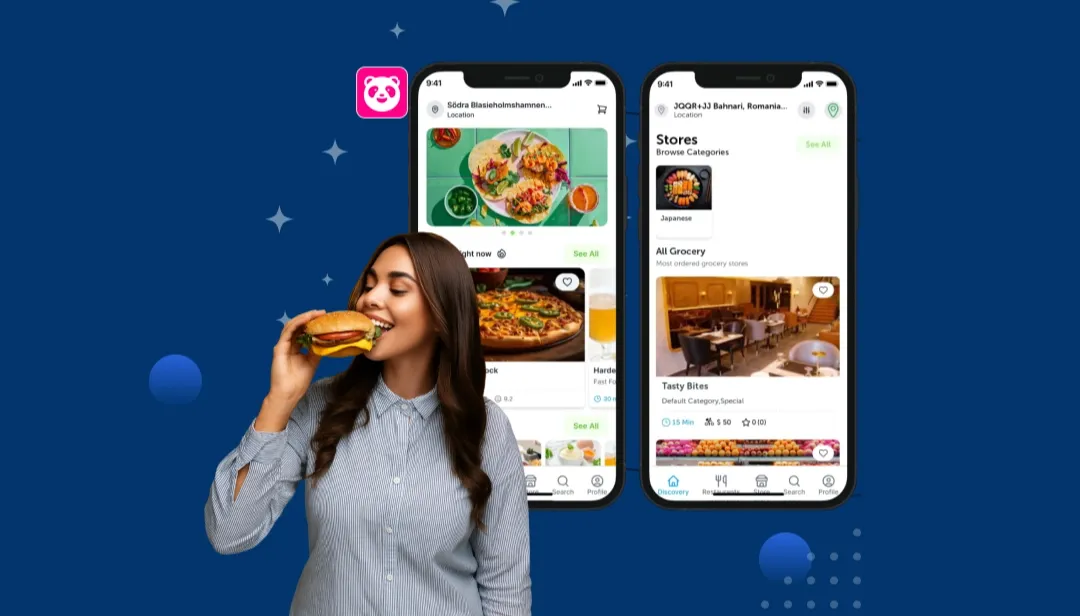
In the busy world we live in today, online food delivery apps have completely changed the way we eat food. Application like Hungry Panda has introduced itself to the market and became incredibly popular by introducing niche audiences with many different types of food, fast and reliably. As the demand for ease of dining increases, creating a food delivery service app has become an economically viable opportunity for entrepreneurs. If you want to build an app like Hungry Panda is more than a good idea; it requires planning, optimization, and technology. Everything you coordinate from providing users with a seamless experience to managing the deliveries matters to be a successful food delivery service. In this blog you will find the essential steps, technology to consider, and costs associated with developing a food delivery app like Hungry Panda, so you can be another success story in the food-tech business market.
What is HungryPanda?
HungryPanda is a global food delivery platform specializing in authentic Asian cuisine, with a primary focus on the Chinese community around the world. Founded in 2016, HungryPanda connects users with Asian restaurants, enabling easy ordering with multi-language support and quality delivery. HungryPanda operates in various countries and has offered a strong niche to communities by covering food preferences for cultural dining situations along with groceries and other specialty food. It successfully merges cultural authenticity with advanced technology to create a hassle-free and delightful food delivery experience for a narrowly focused demographic.
Why Build a Food Delivery App Like HungryPanda?

Online food delivery has transitioned from a luxury to a commonplace essential in the last several years, which now presents tremendous opportunity for entrepreneurs. Building your own food delivery app like Hungry Panda can pay dividends for several reasons.
1. Narrowly Defined Niche
HungryPanda clone app development is mainly servicing the Asian food community internationally, which reveals that a narrow audience and cultural context can foster some very committed clients as well as consistent demand. As far as online food delivery, culturally based food will make your app stand apart from a crowded marketplace.
2. Rapidly Growing Sector
The global food delivery market is expected to see explosive growth over the next 5 years. With a growing number of smartphones and the progressive consumer shift in how people eat, the demand for convenient dining experiences has never been higher. To enter now would be to advance on this growth curve.
3. Customer Retention
Chinese food delivery app development is winning to cause their customers to revisit their service by providing reliable services, stream-lined technology, and consistent quality. After a customer feels they can rely on your service, they are far more likely to order repeatedly and often through your app; a very steady stream of revenue.
4. Multiple Revenue Streams
Food delivery apps have multiple revenue streams beyond delivery fees. They can earn money through commissions from restaurants, in-app ads, subscription models, premium features, and collaborations or partnerships as part of a fully sustainable business model.
5. Being Scalable and Global
Just because you start locally doesn’t mean it has to end locally! With the correct tech stack and marketing tactics, your Asian food delivery app development could potentially scale and expand regionally or even globally, just like HungryPanda, which operates in many countries.
Features To Include In An App Like Hungrypanda

Here is the list of HungryPanda app features which you must know about:
1. Simple User-Focused Design
The Food delivery app for Asian cuisine should have a user-friendly and clean design. For instance, the user should be able to easily browse restaurants, see menus, order and track deliveries in as few steps as possible - there should be no unnecessary barriers to achieving this for the user.
2. Multilingual Version
Having a multilingual version for your HungryPanda-like food delivery app lets you cater to your communities and attract users by allowing them to view and complete their orders in their language preference. It allows users to navigate their selection in their own language.
3. Thoughtful Search & Filtering
Allow users to configure their search of restaurants or dishes with filters for cuisine type, price, rating, dietary preferences, and delivery time to set up a personalized food discovery experience.
4. Order Tracking
Users can track, in real-time, the preparation, dispatch, and GPS location of their order until delivered by courier. As a result of the transparency provided through the HungryPanda-style app in the UK and the trust established in the delivery experience, users will likely experience higher satisfaction levels overall with food delivery.
5. Multiple Secured Payment Options
Incorporation of multiple secured payment options, such as credit/debit cards, e-wallets, and encrypted online banking to facilitate safe, speedy and hassle-free transactions.
6. Restaurant and Menu Management
A back-end platform for restaurants to change their menus, pricing, offers, and availability in real time, ensuring that users see their current and accurate data.
7. Push Notifications
Provide users with timely notifications about their order status, restaurant additions, new development and updates, special offers and discounts, and personalized in-app offers so that they will continue to engage and return to the app regularly.
8. Ratings and Reviews System
Allow customers to provide feedback on restaurants, dishes, and delivery services to help maintain quality thresholds and also help other users decide which options to select.
Technology Stack to Build a HungryPanda-Like App
The tech stack is the backbone of any app development, and here, you will create an app like HungryPanda with your unique vision. So, understanding the right technology stack is essential. Simply put, it defines how scalable, secure, and future-ready your app will be. Using the latest tools and frameworks can give your HungryPanda-like app a strong competitive advantage. However, many entrepreneurs find it challenging to choose the ideal tech stack when building such feature-rich delivery platforms.
Therefore, the tech stack follows as:
Frontend (User Interface):
-
Mobile App: React Native / Flutter (for cross-platform) or Swift (iOS), Kotlin (Android)
-
Web Panel (for restaurants): React.js, Vue.js
Backend:
-
Node.js, Python (Django), or PHP (Laravel)
-
Database: PostgreSQL, MySQL, or MongoDB
-
Real-time updates: WebSockets or Firebase
APIs & Integrations:
-
Google Maps API (location & directions)
-
Twilio or Firebase (SMS/email notifications)
-
Payment gateway (Stripe, Razorpay, etc.)
Development Steps for a HungryPanda Clone App
Creating a food delivery application like HungryPanda takes time, strategic planning, using the right technology stack, and professionally developing the application. If you hired a food delivery application development company, you would typically follow these five steps:
1. Requirement Analysis & Market Research
You will begin your app development journey by analyzing your target audience, niche of the market, and your business objectives. Your outsourced Mobile app development company will perform competitor analysis, analyze enticing selling features, identify functional requirements in order to establish a strong foundation.
2. UI/UX Design & Prototyping
Customers will only engage with your product if it is visually appealing. The company you have hired will deliver designs that are jazzy, with an easy-to-navigate prototype for the end-user utilizing intuitive layouts. It is also important to implement a product that is easy to use or quirky, for the restaurants and the bike delivery partner to use.
3. Core Development & Feature Integration
Now during core HungryPanda app development , the developers will create the product by coding the app front end and back end. The place incorporates big-time features such as multi-language support, a secure payment gateway, persistent push notifications, real-time tracking, another way to handle businesses, and restaurant management features. This is also the step to set up where you will implement your APIs for proper integration seamlessly from third-party services.
4. Testing & Quality Assurance
Before you have launched your app, you have to make sure the app is tested and any bugs have been fixed, and that you are smoothly running. Verify any facility/functionalities that rely on each operating system, etc. that will run your app independently. The On-demand food delivery app services providers execute functional, usability, and security testing to provide a high quality and defect-free final product.
5. Deployment & Post Launch Support
Once the app is ready and passes all quality checks, it is deployed to the app stores, such as Google Play and Apple App Store. The HungryPanda app development company will also provide ongoing maintenance, updates, and feature enhancements to keep a competitive edge in the market like HungryPanda.
How Much Does it Cost to Build a Food Delivery App like HungryPanda?

The typical cost to build a food delivery app like HungryPanda is generally between $15,000 and $50,000 or more depending on the complexity of the app, the application features, and the development team expertise. A standard version with basic features and functionality will cost less, while an advanced version with AI, multi-language support, and the ability to scale the app in global markets, will cost more.
Here are seven primary factors that will impact total HungryPanda clone app development cost:
1. App Platform (iOS, Android, or Both)
The HungryPanda app cost for a single platform will be less than selecting both. Choosing a cross-platform App development costs less and also allows a broader reach.
2. Features and Functionality
Whether it's a basic feature like browsing the menu, placing an order, and making payments, the costs will be much lower than advanced features like real-time GPS tracking, loyalty programs, and AI-based recommendations which will drive the costs up significantly.
3. UI/UX Design Complexity
While a straightforward, functional design is cheaper, a fully customizable, engaging interface that includes animations, scalable layouts, and easy navigation options increases the cost to build a food delivery app like HungryPanda.
4. Technology Stack & Integrations
Selecting the technology stack (programming languages and frameworks) and adding third-party services and APIs, such as payment processing, mapping services, and chat bots, can also affect the project budget and timeline.
5. Development Team Skills and Location
While food delivery app development companies from the US or UK have higher hourly costs than those in Asia or Eastern Europe, their experience and knowledge can help with quality and speed to deliver.
6. Testing and Quality Assurance
The more tests done for performance, security, and compatibility will increase costs, but these added costs are helpful in allowing easy user experiences upon launch. They aid the potential to lower post launch fixes that can be much more costly than testing.
7. Post Release Maintenance and Updates
An anticipated cost item after launch will be the regular updates, bug fixes, and added features. You should consider 15-20% of your original cost to build a food delivery app like HungryPanda as an annual ongoing maintenance investment.
Note: While you can launch a basic, HungryPanda-like app for less cost, allocating a budget for advanced features that employ a simple, intuitive design, and quality development increases performance and customer retention. Hire food delivery app developers which are focused on food delivery app development, giving you the best chance of balancing cost and quality, while still building a food tech platform that addresses those "customer" and "tech" opportunities that you want to pursue.
Challenges in Building a Niche Food Delivery App
Starting a niche food delivery platform like HungryPanda carries not just the potential for an exciting and lucrative business opportunity, but it also has its fair share of hurdles that require careful planning and execution.
Limited Target Market
Unlike mainstream platforms that can and are designed to appeal to all consumers and ethnicities, a niche platform is specific to a proportion of consumers. The downside of this, means that you will have a limit on your initial consumer base and you will therefore need to funnel all your marketing & community engagement efforts towards finding your consumers.
Partnerships with Restaurants
Working with restaurants that offer services related to your niche may be difficult. You will need to reassure and encourage restaurants to work through your platform by demonstrating that your platform is capable of growing and meeting timing and pricing competitive to established ones.
Cultural & Language Development
A significant challenge in catering to the niche is the requirement of multiple languages, culturally appropriate UI/UX design and menu representation that is representative - on top of this there is a significant cost involved in the overall development of this.
Delivery Management
Depending on the platform's minimum quantity for the multiplexed orders, it will often be difficult to combine Speed, Quality of the food and Cost efficiently within your delivery service limits as a niche platform often doesn't have the same volume of orders in geographical supply areas as other delivery applications in the area.
Mainstream Niche Competition - Delivery Platforms
Mainstream delivery companies can easily contribute to the niche of your new platform by expanding into that ethnically or cultural marketplace. They have an established base of users or community to leverage and have significant logistical capabilities that can be copied for your users/ customers.
Why Choose IMG Global Infotech for Your HungryPanda-Like App?
IMG Global Infotech provides quality, scalable, user-friendly food delivery apps for a niche market. We know how to integrate skillfully and securely, with UI/UX design techniques. We will help ensure that your HungryPanda-like food delivery app creates a niche within the food-tech marketplace. We are focused on seamless performance, attention to user experience as well as providing ongoing, long term support that will help you launch the app and grow your platform. Hire a mobile app developer from us to start developing your food delivery app, and turn your unique idea into a profitable business.
Conclusion
Building a food delivery app like HungryPanda entails a lot more than simply being inspired: Planning strategically, utilizing advanced tech, and studying your audience deeply will help you develop your food delivery app. Developing your food delivery app should focus on niche markets, integrating significant features, and making the operations efficient. Doing these will differentiate your platform from competition, and capture and engage loyal customers. Partner with an established Custom food delivery app development company, that way you will find that your app is robust, scalable, and have a competitive advantage. If you put the right bet on strategy you can enable your HungryPanda-like food delivery app to disrupt the efficiently exploding food-tech industry we are seeing globally.
Neeraj Rajput is the co-founder of a leading IT company with over a decade of experience in technology consulting, product development, and digital transformation. With a passion for solving complex business challenges through smart tech solutions, he shares insights on innovation, leadership, and the evolving IT landscape


